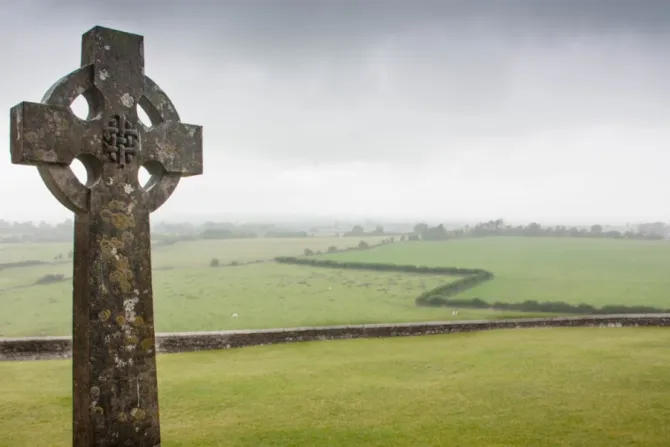His father prayed tirelessly for him, but Richardson said that he was "dishonest" and "unreliable" at the time, and unable to accept help.
But in August 1996, his father persuaded him to go to Medjugorje, enticing him with brochures of sun-kissed Croatian beaches.
Richardson, then aged 23, took heroin before he got on the airplane for the week-long stay in the town in Bosnia and Herzegovina, where the Virgin Mary is said to have appeared since 1981.
Unable to sleep for the first three days because of the effects of drugs, he wandered around the town "with a lot of dark thoughts in my head." Eventually, he found a bench by a statue of Mary. He fell asleep briefly, then woke at around 5 a.m.
"I remember waking up. It was a very profound moment," he said. "The sun was shining on my face. There were little birds chirping. There was this lovely breeze blowing over my head as I awoke. And I felt peace I hadn't felt since I was a child, this interior peace."
When Richardson discussed his battle with addiction in his interview with CNA, he emphasized: "I just want to give God glory here."
He said that after his "mini-conversion" in Medjugorje, he entered the Cenacolo Community, which specializes in helping young people to give up drugs. The community supported him as he left behind his addictions to heroin and methadone, an opiate prescribed by doctors as an alternative to heroin.
"I joined the community in 2002 and I changed my life," he said. "I came back to the faith and so did my wife. We've been blessed. We have 12 children now, and one foster child. My youngest child was born pretty sick because myself and her mother were on drugs. She's been a missionary now for the past four years. God is just so good in every way."
After his recovery, Richardson set up his own waste disposal company, which led him to the martyrs' book.
While he was wondering about how best to share the work with others, the 2018 World Meeting of Families took place in Dublin.
Richardson was invited to offer his testimony, surrounded by his wife and children, before Pope Francis in Dublin's Croke Park. (He even received a namecheck in the pope's address that evening.)
(Story continues below)
Subscribe to our daily newsletter
The Richardson family was chosen to represent Europe at the gathering, alongside other families representing Asia, Africa, and the Americas.
"The other family was from Mosul in Iraq," he said. They were the family of Fr. Ragheed Ghanni, a Chaldean Catholic priest who was shot dead outside his church in the city in 2007.
"I got to spend the weekend with his mother and father, and sisters," he said. "It really had a big impact on me, that this guy was martyred just a few years ago. This is real, you know?"
He felt galvanized by the encounter and approached a friend, Michael Kinsella, national director of Aid to the Church in Need Ireland. With his encouragement, the charity decided to republish the book, with all proceeds going to help persecuted Christians.

Kinsella told CNA that the book had inspired significant donations.



